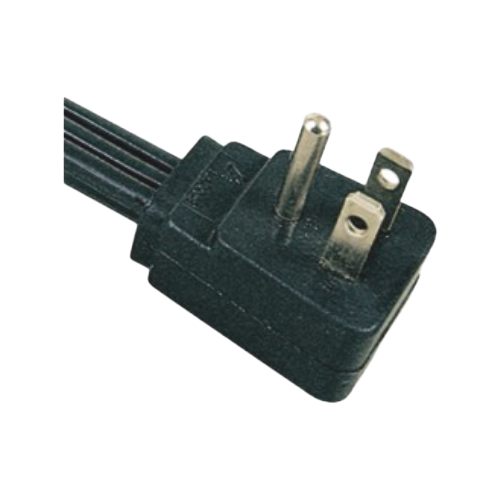Using a US standard power cord with a power strip safely and effectively involves following several best practices to ensure both functionality and safety. Here are some key guidelines:
Check Power Strip Ratings: Ensure that the power strip’s voltage and amperage ratings are appropriate for the devices you plan to connect. Most standard power strips are rated for 15 amps and 120 volts, which accommodate most household and office electronics. Verify these ratings by checking the power strip’s label or packaging to avoid overloading, which could cause overheating and potential fire hazards. For higher power devices, like space heaters or heavy-duty appliances, ensure the power strip is specifically rated to handle such loads.
Avoid Overloading: Overloading occurs when the total wattage of all connected devices exceeds the power strip’s peak load capacity. Calculate the total wattage by summing the power consumption (in watts) of each device connected to the strip. This information can typically be found on the device’s label or in the user manual. As a rule of thumb, ensure the combined wattage does not exceed 80% of the strip’s peak rating to allow for a safety margin and prevent overheating.
Inspect for Damage: Regularly check both the power cord and the power strip for any visible signs of damage, such as fraying, cuts, exposed wires, or scorch marks. Damage to the insulation or wiring can bring about electrical shorts, shocks, or fires. If any damage is found, replace the power cord or strip immediately. Do not attempt to repair damaged cords or strips yourself unless you are qualified to do so, as improper repairs can pose serious safety risks.
Avoid Daisy-Chaining: Daisy-chaining, or connecting multiple power strips together, can create an excessive load on a single outlet, significantly increasing the risk of overheating and fire. Instead, use a single, adequately rated power strip to accommodate all your devices. If you need more outlets, consider having additional electrical outlets installed by a licensed electrician.
Proper Placement: Place the power strip on a flat, stable surface where it will not be easily disturbed or covered. Ensure the location is well-ventilated to prevent heat buildup. Avoid placing the power strip under rugs, carpets, or furniture, as this can restrict airflow and bring about overheating. Position the strip where it will not be subject to foot traffic, which could bring about accidental damage or tripping hazards.
Use Surge Protectors: Choose power strips that feature built-in surge protection. Surge protectors safeguard your electronic devices from power surges and spikes, which can occur due to lightning strikes, power outages, or electrical faults. These devices absorb excess voltage and protect connected equipment from damage. Look for surge protectors with a high joule rating, which indicates their capacity to absorb energy from power surges over time.
Keep Dry: Ensure that the power strip and power cord are kept dry at all times. Exposure to moisture can bring about electrical shorts, shocks, and fires. Avoid placing power strips in areas prone to spills or high humidity, such as near sinks, in bathrooms, or in basements. If you must use a power strip in a potentially damp area, consider using one designed for wet environments, which will have additional protective features.
JT-3A US Standard Elbow Three-Plug Oxygen-Free Copper Core PVC Power Cord



 English
English عربى
عربى











